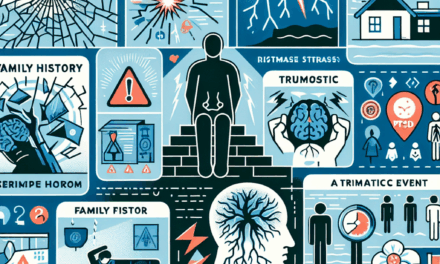An Innovative Approach to Managing Healthcare Billing Volume
Healthcare billing is a complex and often overwhelming process that can significantly impact the financial health of medical practices and hospitals. As the volume of healthcare services continues to rise, so does the volume of billing and claims processing. This article explores innovative approaches to managing healthcare billing volume, focusing on five key subtopics: automation and technology, data analytics, patient engagement, outsourcing, and regulatory compliance. Each section will provide insights into how these strategies can streamline billing processes, reduce errors, and improve overall efficiency.
1. Automation and Technology in Healthcare Billing
Automation has revolutionized many industries, and healthcare billing is no exception. The integration of technology into billing processes can lead to significant improvements in efficiency and accuracy. Automation tools can handle repetitive tasks, reduce human error, and free up staff to focus on more complex issues.
One of the most significant advancements in healthcare billing is the use of Electronic Health Records (EHR) systems. These systems allow for seamless integration of patient data, which can be directly linked to billing processes. For instance, when a healthcare provider documents a patient visit in the EHR, the billing information can be automatically generated based on the services rendered. This reduces the time spent on manual data entry and minimizes the risk of errors.
Additionally, automated billing systems can streamline the claims submission process. By using software that automatically checks for errors before submission, healthcare providers can reduce the number of denied claims. According to a study by the American Medical Association, nearly 20% of claims are denied on the first submission, leading to delays in payment and increased administrative costs. Automation can help mitigate these issues by ensuring that claims are accurate and complete before they are sent to payers.
Furthermore, automation can enhance revenue cycle management (RCM) by providing real-time insights into billing processes. Healthcare organizations can use dashboards and reporting tools to monitor key performance indicators (KPIs) such as days in accounts receivable, claim denial rates, and payment turnaround times. This data can help identify bottlenecks in the billing process and inform strategic decisions to improve efficiency.
- Case Study: A Large Hospital System – A large hospital system implemented an automated billing solution that integrated with their EHR. As a result, they saw a 30% reduction in claim denials and a 25% decrease in the time spent on billing tasks.
- Statistics – According to a report by the Healthcare Financial Management Association, organizations that adopted automation in their billing processes experienced a 15% increase in revenue within the first year.
In conclusion, automation and technology play a crucial role in managing healthcare billing volume. By leveraging these tools, healthcare organizations can improve accuracy, reduce administrative burdens, and enhance overall financial performance.
2. Leveraging Data Analytics for Billing Optimization
Data analytics is another innovative approach to managing healthcare billing volume. By harnessing the power of data, healthcare organizations can gain valuable insights into their billing processes, identify trends, and make informed decisions to optimize revenue cycle management.
One of the primary benefits of data analytics in healthcare billing is the ability to track and analyze claim denials. By examining the reasons for denials, organizations can identify patterns and address the root causes. For example, if a significant number of claims are denied due to missing documentation, the organization can implement training programs for staff to ensure that all necessary information is collected at the time of service.
Moreover, predictive analytics can be used to forecast billing volume and cash flow. By analyzing historical data, healthcare organizations can predict future trends in patient visits, service utilization, and payment patterns. This information can help organizations plan for staffing needs, manage cash flow, and make strategic investments in resources.
Data analytics can also enhance patient engagement in the billing process. By analyzing patient demographics and payment behaviors, healthcare organizations can tailor their communication strategies to improve collections. For instance, organizations can segment patients based on their payment history and send targeted reminders or payment plans to those who may be at risk of defaulting on their bills.
- Case Study: A Community Health Center – A community health center utilized data analytics to analyze claim denials and discovered that 40% were due to coding errors. By providing targeted training to their coding staff, they reduced denials by 50% within six months.
- Statistics – According to a report by McKinsey & Company, healthcare organizations that leverage data analytics can improve their revenue cycle performance by up to 20%.
In summary, leveraging data analytics is a powerful strategy for optimizing healthcare billing processes. By gaining insights into billing trends and patient behaviors, organizations can make data-driven decisions that enhance efficiency and improve financial outcomes.
3. Enhancing Patient Engagement in the Billing Process
Patient engagement is a critical component of effective healthcare billing management. Engaging patients in the billing process can lead to improved collections, reduced confusion, and enhanced patient satisfaction. Innovative strategies to enhance patient engagement include transparent communication, personalized billing experiences, and educational resources.
Transparent communication is essential for building trust with patients. Healthcare organizations should provide clear and concise information about billing practices, including what services will be billed, expected costs, and payment options. This transparency can help patients feel more informed and empowered to manage their healthcare expenses.
Personalized billing experiences can also enhance patient engagement. By utilizing data analytics, healthcare organizations can tailor billing communications to individual patients based on their preferences and payment history. For example, some patients may prefer to receive electronic bills via email, while others may prefer traditional paper statements. Offering multiple payment options, such as online payments, payment plans, and financial assistance programs, can also improve patient satisfaction.
Additionally, providing educational resources can empower patients to take an active role in their healthcare billing. Organizations can create informative materials that explain common billing terms, insurance coverage, and financial assistance options. By educating patients about the billing process, organizations can reduce confusion and improve collections.
- Case Study: A Multi-Specialty Practice – A multi-specialty practice implemented a patient engagement program that included personalized billing statements and educational resources. As a result, they saw a 20% increase in on-time payments and a 15% reduction in billing inquiries.
- Statistics – According to a survey by the Healthcare Financial Management Association, 70% of patients reported that they would be more likely to pay their bills if they received clear and transparent information about their charges.
In conclusion, enhancing patient engagement in the billing process is a vital strategy for managing healthcare billing volume. By fostering transparent communication, personalizing billing experiences, and providing educational resources, healthcare organizations can improve collections and enhance patient satisfaction.
4. Outsourcing Billing Services for Efficiency
Outsourcing billing services is an innovative approach that many healthcare organizations are adopting to manage billing volume more effectively. By partnering with specialized billing companies, healthcare providers can streamline their billing processes, reduce administrative burdens, and focus on delivering quality patient care.
One of the primary advantages of outsourcing billing services is access to expertise. Billing companies employ professionals who are well-versed in the complexities of healthcare billing, coding, and compliance. This expertise can lead to improved accuracy in claims submission and a reduction in denials. For example, billing companies often have dedicated teams that stay updated on the latest coding guidelines and payer requirements, ensuring that claims are submitted correctly the first time.
Outsourcing can also lead to cost savings for healthcare organizations. By eliminating the need for in-house billing staff, organizations can reduce payroll expenses and overhead costs. Additionally, outsourcing allows organizations to scale their billing operations based on demand. During peak periods, such as flu season or open enrollment, billing companies can quickly ramp up their services to accommodate increased volume.
Furthermore, outsourcing billing services can enhance revenue cycle management by providing access to advanced technology and analytics tools. Many billing companies utilize sophisticated software that automates claims processing, tracks payments, and generates reports. This technology can provide healthcare organizations with valuable insights into their billing performance and help identify areas for improvement.
- Case Study: A Small Medical Practice – A small medical practice outsourced its billing services to a specialized company and experienced a 30% increase in collections within the first year. The practice also reported a significant reduction in administrative burdens, allowing staff to focus on patient care.
- Statistics – According to a report by the Medical Group Management Association, practices that outsource their billing services see an average increase in revenue of 10-15%.
In summary, outsourcing billing services is an effective strategy for managing healthcare billing volume. By leveraging the expertise of specialized billing companies, healthcare organizations can improve accuracy, reduce costs, and enhance overall efficiency in their billing processes.
5. Navigating Regulatory Compliance in Healthcare Billing
Regulatory compliance is a critical aspect of healthcare billing that organizations must navigate to avoid penalties and ensure proper reimbursement. The healthcare industry is subject to numerous regulations, including the Health Insurance Portability and Accountability Act (HIPAA), the Affordable Care Act (ACA), and various payer-specific guidelines. Understanding and adhering to these regulations is essential for effective billing management.
One of the key challenges in healthcare billing compliance is the ever-changing landscape of regulations. Healthcare organizations must stay informed about updates to coding guidelines, reimbursement policies, and compliance requirements. Failure to comply with these regulations can result in denied claims, financial penalties, and damage to the organization’s reputation.
To effectively navigate regulatory compliance, healthcare organizations should implement robust compliance programs. These programs should include regular training for staff on billing regulations, coding updates, and compliance best practices. Additionally, organizations should conduct regular audits of their billing processes to identify potential compliance issues and address them proactively.
Moreover, technology can play a significant role in ensuring compliance. Many billing software solutions include built-in compliance checks that flag potential issues before claims are submitted. This can help organizations avoid costly errors and ensure that they are adhering to regulatory requirements.
- Case Study: A Regional Hospital – A regional hospital implemented a compliance program that included staff training and regular audits. As a result, they reduced claim denials related to compliance issues by 40% within one year.
- Statistics – According to a report by the Centers for Medicare & Medicaid Services, improper payments in the Medicare program alone totaled $36 billion in 2020, highlighting the importance of compliance in billing practices.
In conclusion, navigating regulatory compliance is a crucial aspect of managing healthcare billing volume. By implementing robust compliance programs and leveraging technology, healthcare organizations can reduce the risk of errors, improve reimbursement rates, and maintain their financial health.
Conclusion
Managing healthcare billing volume is a complex challenge that requires innovative approaches to improve efficiency and accuracy. By leveraging automation and technology, utilizing data analytics, enhancing patient engagement, outsourcing billing services, and navigating regulatory compliance, healthcare organizations can streamline their billing processes and improve financial performance.
As the healthcare landscape continues to evolve, organizations must remain adaptable and proactive in their billing strategies. By embracing these innovative approaches, healthcare providers can not only manage billing volume more effectively but also enhance patient satisfaction and ensure the financial sustainability of their practices.
In summary, the key takeaways from this article include:
- Automation and technology can significantly reduce errors and improve efficiency in healthcare billing.
- Data analytics provides valuable insights that can optimize revenue cycle management and enhance patient engagement.
- Engaging patients in the billing process fosters transparency and improves collections.
- Outsourcing billing services allows organizations to access expertise and reduce administrative burdens.
- Navigating regulatory compliance is essential for avoiding penalties and ensuring proper reimbursement.
By implementing these strategies, healthcare organizations can effectively manage billing volume and focus on what matters most: providing high-quality care to their patients.





